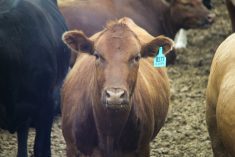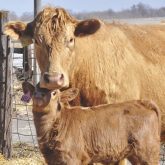In spite of greatly increased knowledge and better mineral supplements, veterinarians are probably encountering more mineral issues than we ever have.
This is despite more collaboration between nutritionists, feed mills, veterinarians and other agricultural professionals.
Why is this? I will explain some of the nutritional deficiencies we see.
There is no doubt the BSE problem took its toll on farmers and different ones skimped in different ways when it came to saving money. After one or two or three years from not using minerals and only using salt or fortified salt, deficiencies are coming to light.
Read Also

Dennis Laycraft to be inducted into the Canadian Agricultural Hall of Fame
Dennis Laycraft, Executive Vice President of the Canadian Cattle Association, is one of this year’s inductees into the Canadian Agricultural Hall of Fame. Laycraft was nominated for his many contributions to the cattle industry.
One must remember with clinical deficiencies of one mineral, others in the herd are close to deficient. If we see one or two cases in a herd, there will be variation with the other herdmates but in the majority of cases most will be subclinically deficient.
In the past year, we have seen two herd cases of vitamin A deficiencies causing ill-thrift and small, weak calves being born. Others went on to develop nervous disorders and in both cases, this diagnosis was substantiated. In both cases, minerals were not being given.
You can still see the odd case if only free-choice minerals are given as individual cows consume certain minerals to varying degrees. Some overconsume, some underconsume, and some consume virtually no minerals at all.
When nutritionists calculate the formulation of the minerals, they assume there is nothing in the feed. But there are some minerals and vitamins in the feed so that gives you a bit of a positive buffer in case minerals are not consumed adequately.
The best way to mix and give vitamins and minerals is mixed daily in the feed. (This is what we call a TMR or total mixed ration.) That way every cow, heifer, or feedlot animal consumes adequate amounts as long as they are eating.
With heavier milking animals, more milk fevers and deficiencies of calcium, phosphorus, or magnesium are seen. These deficiencies (or a combination thereof) often result in downer cattle slightly before, slightly after, or even during calving. One often has to go to more of these minerals in a pre-calving mineral.
The good news about these downer cows is that most respond when the veterinarian administers what they need with a large volume of the three main minerals (calcium, phosphorus, and magnesium). He/she may recommend looking at your mineral program to prevent other cases. If there is just one case, it may again go back to the fact that the individual cow is not consuming any of the minerals.
Feed mills usually formulate three to four different minerals. These are often put into categories such as pre-calving, breeding mineral, maintenance, pasture, and winter mineral. All of these are formulated differently for different reasons, but the most important thing is that cattle are getting some sort of mineral year round.
All trace minerals have approximately 40 to 50 per cent salt, which is fine. The salt often is what attracts the cattle to consume it. This is a lot different than a trace mineralized salt (either loose or block form), where the main ingredient is salt with just a very few trace minerals added. The major minerals (calcium, phosphorus, and magnesium) as well as others are not included.
A vast percentage of Western Canada is deficient in selenium, so this must be supplemented as well. Copper can also be low and this is especially true up in the Peace River area of Alberta. When Dr. Cheryl Waldner looked at the death of calves across Western Canada, many were deficient in vitamins A and E, as well as copper deficient. Some producers are also giving vitamin E capsules to high-risk calves.
These vitamins and minerals are necessary for a proper functioning immune system, as well as for growth and health.
Calves with specific deficiencies are only the tip of the iceberg. Other calves could be getting sick from scours and pneumonia when in actual fact a subclinical deficiency may be the precursor to their sickness.
It’s good to even try a small amount of minerals in your creep areas. Any amount the calves consume will be beneficial.
Let’s keep the mineral and vitamin status up in our cow herds and calves on feed. We should get the money invested in minerals back severalfold because of fewer sick calves, quicker response to treatment, better growth performance and reproductive rates, and you may even cut down on emergency veterinary visits.
















